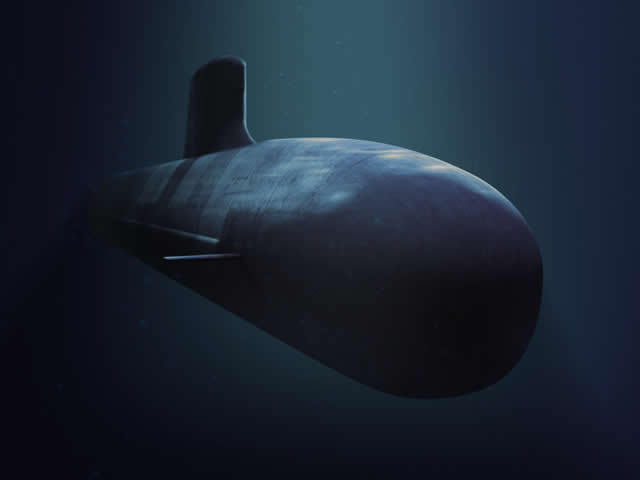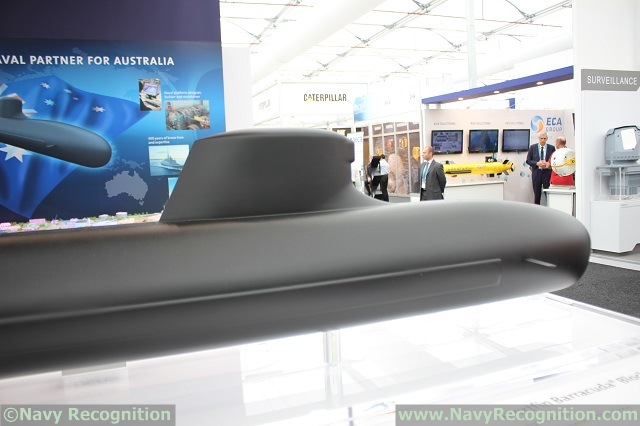 Shortfin
Barracuda Block 1A. Image: DCNS Shortfin
Barracuda Block 1A. Image: DCNS |
|||
The Future Submarine
project is the largest and most complex defence acquisition Australia
has ever undertaken. It will be a vital part of our Defence capability
well into the middle of this century. This $50 billion investment will directly sustain around 1,100 Australian jobs and a further 1,700 Australian jobs through the supply chain. Today’s announcement follows the comprehensive Competitive Evaluation Process (CEP) involving DCNS, TKMS of Germany and the Government of Japan. Each bidder submitted very high quality proposals and the Australian Government takes this opportunity to thank both TKMS and the Government of Japan for their ongoing commitment to Australia and their participation in the process. The process was overseen by an independent Expert Advisory Panel, chaired by former Secretary of the United States Navy, Professor Donald Winter. It was peer reviewed by Vice Admiral Paul Sullivan USN (retired) and Rear Admiral Thomas Eccles USN (retired). This decision was driven by DCNS’s ability to best meet all of Australia's unique capability requirements. These included superior sensor performance and stealth characteristics, as well as range and endurance similar to the Collins Class submarine. The Government’s considerations also included cost, schedule, program execution, through-life support and Australian industry involvement. Subject to discussions on commercial matters, the design of the Future Submarine with DCNS will begin this year. |
|||
|
Video:
Shortfin Barracuda Block 1A at PACIFIC 2015 |
|||
DCNS was competing with the Shortfin Barracuda design against TKMS'
Type 216 and Japan's
Soryu class designs. Based on the French
Navy Barracuda SSN currently in final stage of construction, the
Shortfin Barracuda is 3 meters shorter (94 meters) and 200 tons lighter
(4,500 tons). The two submarines share the same hull but DCNS further improved some aspects of the Shortfin Barracuda Block 1A hull shape in order to maintain the impressive speed and maneuverability qualities expected with the next SSN of the French Navy. Both are fitted with X-shape rudders which provides better handling to the submarine while surfaced and underwater. The "pump jet" allows for higher speed before the onset of cavitation and lower acoustic signature. Last year, the French Navy Barracuda Program Manager told Navy Recognition: "The Barracuda is a major capability investment for the Defense reflecting France's will to maintain its naval power status for the next fifty years. This new submarine will contribute to the deterrence strategy and to the use of conventional means in power projection or intelligence-gathering contexts. Therefore, it will act both as a power projection tool and as a warship". "The Barracuda received many technology transfers from the SSBN and some further developments that should give it a very high discretion, no comparison to the Rubis class. The stealth objectives of the new SSN are very close to those of the current SSBNs [ed. note: Le Triomphant class]." |
|||
 Shortfin
Barracuda Block 1A scale model on display at PACIFIC 2015 Shortfin
Barracuda Block 1A scale model on display at PACIFIC 2015 |
|||
Some of the key
requirement for the Barracuda SSN were long endurance and high transit
speed. The conventional Shortfin Barracuda will retain these intrinsic
qualities: According to Xavier Mesnet, Marketing Director for Surface
Ships and Submarine "It will be able to deploy far away, quickly
and for a significant on-station period". According to DCNS, the Shortfin Barracuda Block 1A, specifically for the Royal Australian Navy, will be the recipient of France’s most sensitive and protected submarine technology and will be the most lethal conventional submarine ever contemplated. |
|||
France's DCNS Clinches SEA1000 Future Submarine Program Contract for Royal Australian Navy
- Posted On










